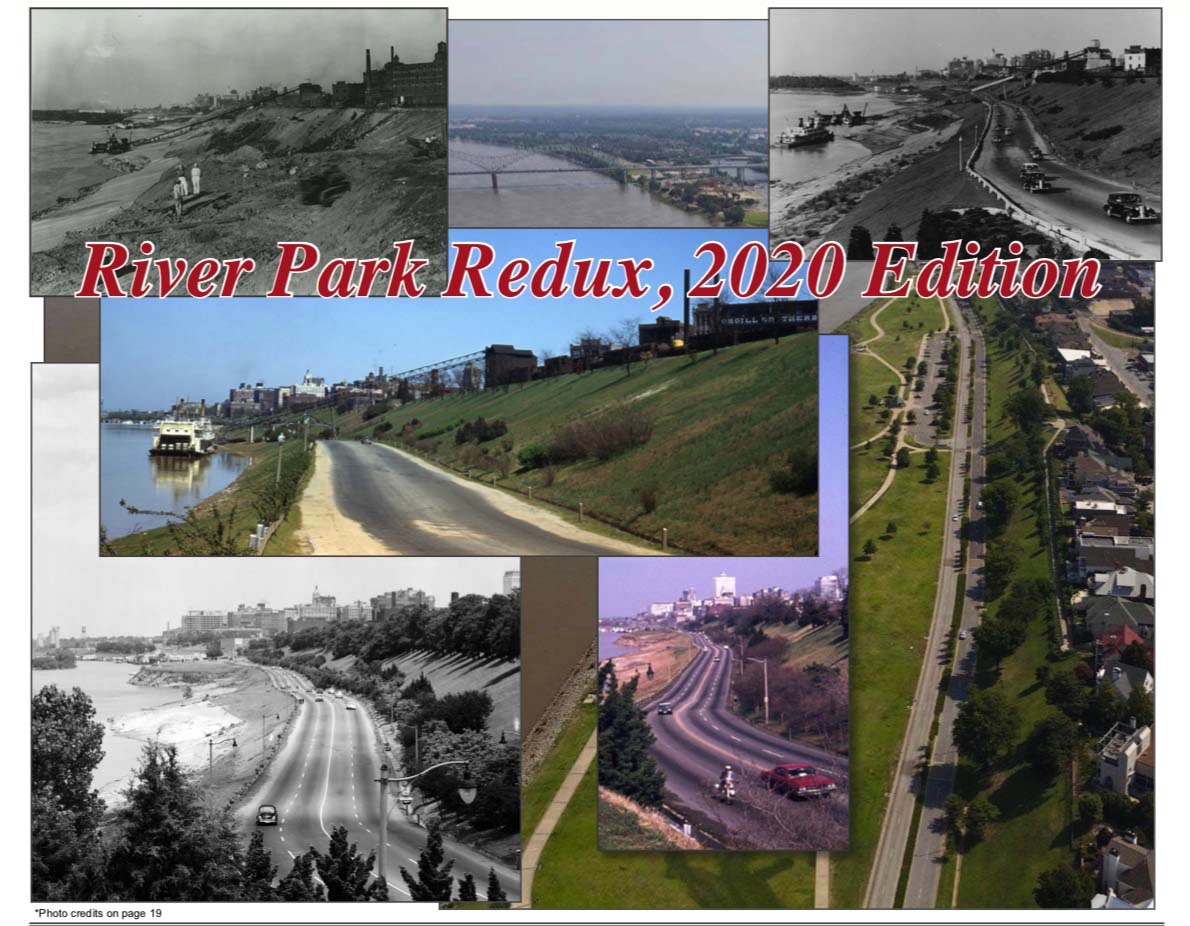Before Tom Lee Park, Riverside Drive evolved from an unstable bank along the bluff in the 1930s to a scenic drive – “a fresh beautiful welcome mat for the city” as Boss Crump once said – that was the first effort of the Memphis Beautiful Commission using local, state and federal Work Progress Administration (WPA) funding in 1935.
Enjoy this cruise down memory lane, um, drive.
—– 1920s —–

From Charles W. Crawford’s 1976 book Yesterday’s Memphis. The Memphis Cave-In of 1926:
A natural disaster that revealed the necessity of stabilizing the bluff’s banks. In July of that year, a large, water-weakened section collapsed near Butler Ave. With the cave-in, the property of the West Kentucky Coal Company slid toward the river. The slide revealed a serious problem for adjacent business owners, and this prompted renewed efforts to strengthen the bank of the river with fill and concrete, and would eventually lead to the building of Riverside Drive in 1935.
—– 1930s —–

Charlie Lambert, StoryBoard Memphis, November 2018:
In 1930 Memphis became the first in the nation to enact a beautification commission to promote a more “beautiful, healthful, safe place to live.” This initiative was conceived by E.H. Crump, political lion in the city for half a century. He noted the ill-kept public and private areas with weeds, litter and blight around the city and wanted something done to correct the unsightly mess that he,visitors and citizens observed every day. He conceived of a “beautiful, scenic drivewayalong the river, landscaped and free of trash, a fresh beautiful welcome mat for the city.”
His sentiments came into being when that first “City Beautiful Commission”(CBC) came into being with a $1,500 budget and a small space for doing business in the Nineteenth Century Club, a women’s club on Union Avenue still standing today. Eight women comprised the membership.In accord with Crump’s suggestion, Riverside Drive was the first initiative of the Commission. In 1935,with local, state, and federal funding (WPA) of a million dollars, the roadway was begun, includinglandscaping, with what was to become the city flower- crepemyrtle bushes – along with redbuds, magnolias, dogwood, and roses. From that beginning, Riverside Drive is today one of the most scenic drives in the city and has been a source of pride for the past 80 years.

—– 1940s – 1950s —–


—– 1960s —–

Below, traffic on Riverside Drive with the Delta Queen riverboat in the top left of the photo, date unknown, c. 1960s.

—– 1970s – 1990s —–

Courtesy of Tom Charlier & The Commercial Appeal, from a 1991 article:
From 1990 (to 1993), the city made vast improvements to Riverside Drive and Tom Lee Park. A Memphis River Front project reinforced the bluff with the installation of a mile-long stone-like dike along the riverfront, behind which sand and dirt were pumped. It placed a 20-acre strip of land between Riverside Drive and the river, acreage that was incorporated into the expanded Tom Lee Park.
—– 2000s —–

Mark Fleischer is the founder and executive director of StoryBoard Memphis. The Orpheum’s Forgotten History was originally published as a front-page feature in StoryBoard’s former print edition in November of 2018. This summer-long online series expands from the confines of print and features more in-depth stories and analysis, never-before published interviews and stories, and recorded interviews from the participants who brought the vintage palace back to life.


WE WILL MISS THE DRIVE DOWN RIVERSIDE DRIVE AND THE BEAUTIFUL SUNSET VIEW OVER THE MISSISSIPPI RIVER.